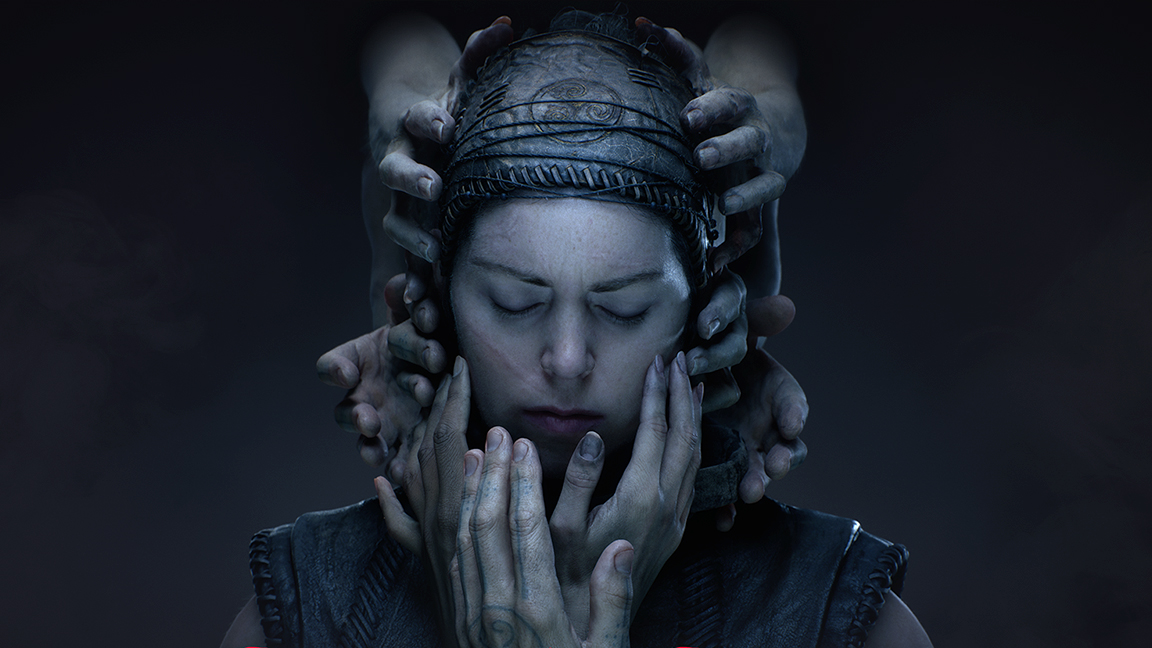
Senua’s Saga: Hellblade 2 is the first game released that has come close to matching the ambitions of the Unreal Engine 5 tech demo shared by Epic Games four years ago. Ninja Theory has wrangled some of the best tech in games and VFX along with UE5’s core features to deliver a game that has become a new visual standard.
Released 21 May for Xbox Series X, one of the best games consoles around at the moment, the game impressed, and harnessed striking landscape design, photo real character models and evocative lighting to bring to life the game’s historical fantasy.
Post release, with time to dwell on the game’s visual spectacle, and coming off the back of a good annual report, I got the chance to sit down with Ninja Theory’s VFX director Mark Slater-Tunstill, and environment art director Dan Attwell, to discover the story behind the making of one of the year’s most visually impressive games.
Crafting Senua's Saga Hellblade 2's visual identity
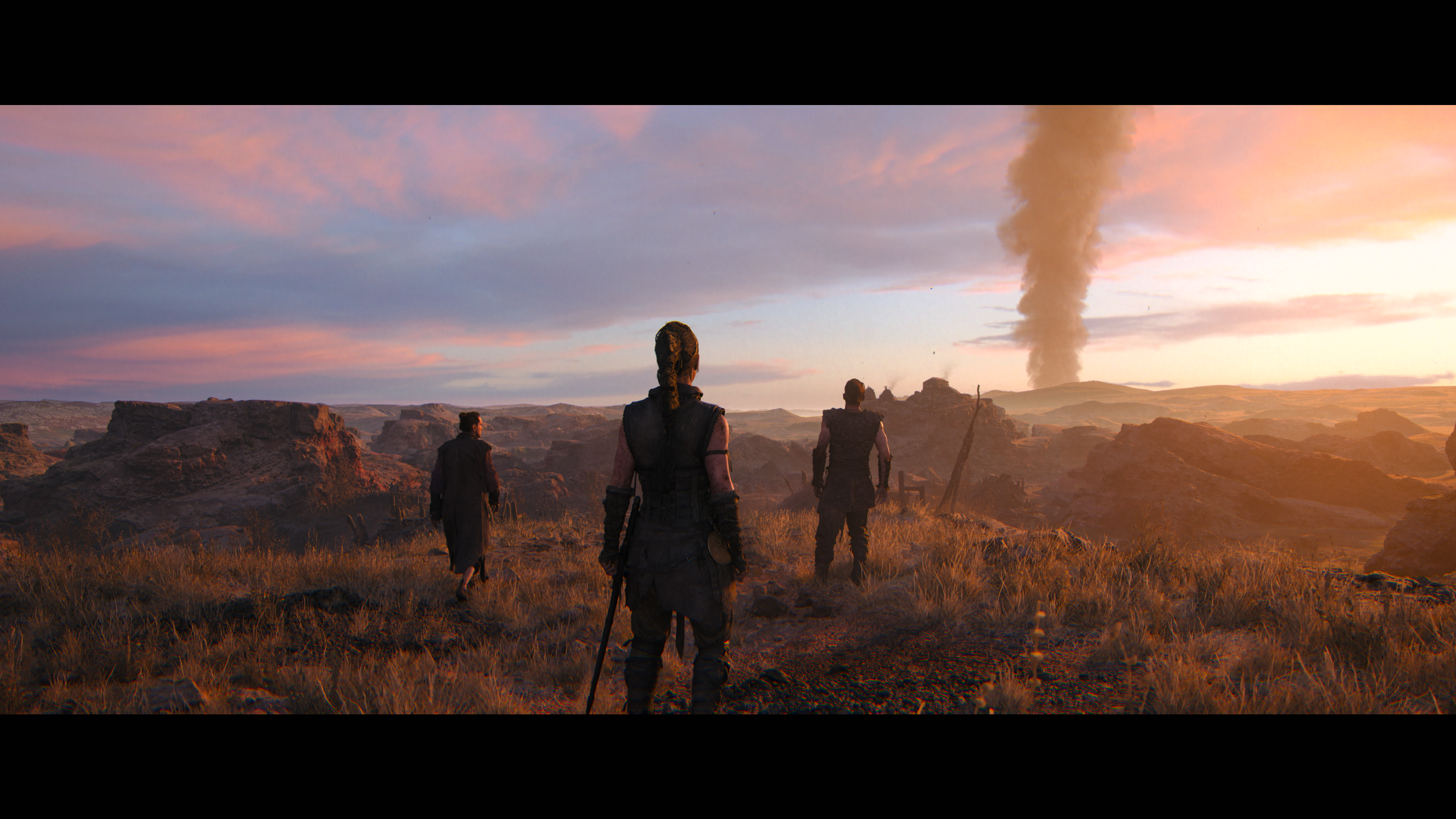
Mark Slater-Tunstill begins by outlining the developer’s ambition for Senua’s Saga: Hellblade 2 as a desire to achieve “cinematic realism” and not simply “pure realism”. The subtle difference is the challenge to replicate the cinematic feel of playing a movie; a game that needs to look real in a filmic sense, with few camera cuts and no intrusive UI.
“From the outset we wanted to make it look filmic,” says Mark, who alludes to the directors and cinematographers that have influenced the game’s visual design, such as the poetic quality of Nicolas Winding Refn.
Mark explains: “That all comes down to even the camera lens, like modelling the anamorphic lens, so you get the barrel distortion and the correct depth of field and lens flares. It's lots of those little things adding together that actually give that feeling. We're all so used to going into the cinema and watching those kinds of movies, and I think the human brain's really good at filling in the gaps. So if you're presented with something, you instantly go, ‘ah, that feels like a movie’.”
Dan Atwell chips in, saying: “I'm proud of the fact that we stuck to our guns, because we knew we wanted to try something different, and we wanted to make something that looked unlike anything that had already been done in terms of games. And we took a big, bold risk to do that, because there's an aesthetic to games people are used to, and by picking that different angle and that different aesthetic, we were taking a risk. I personally think it paid off in terms of the final product.”
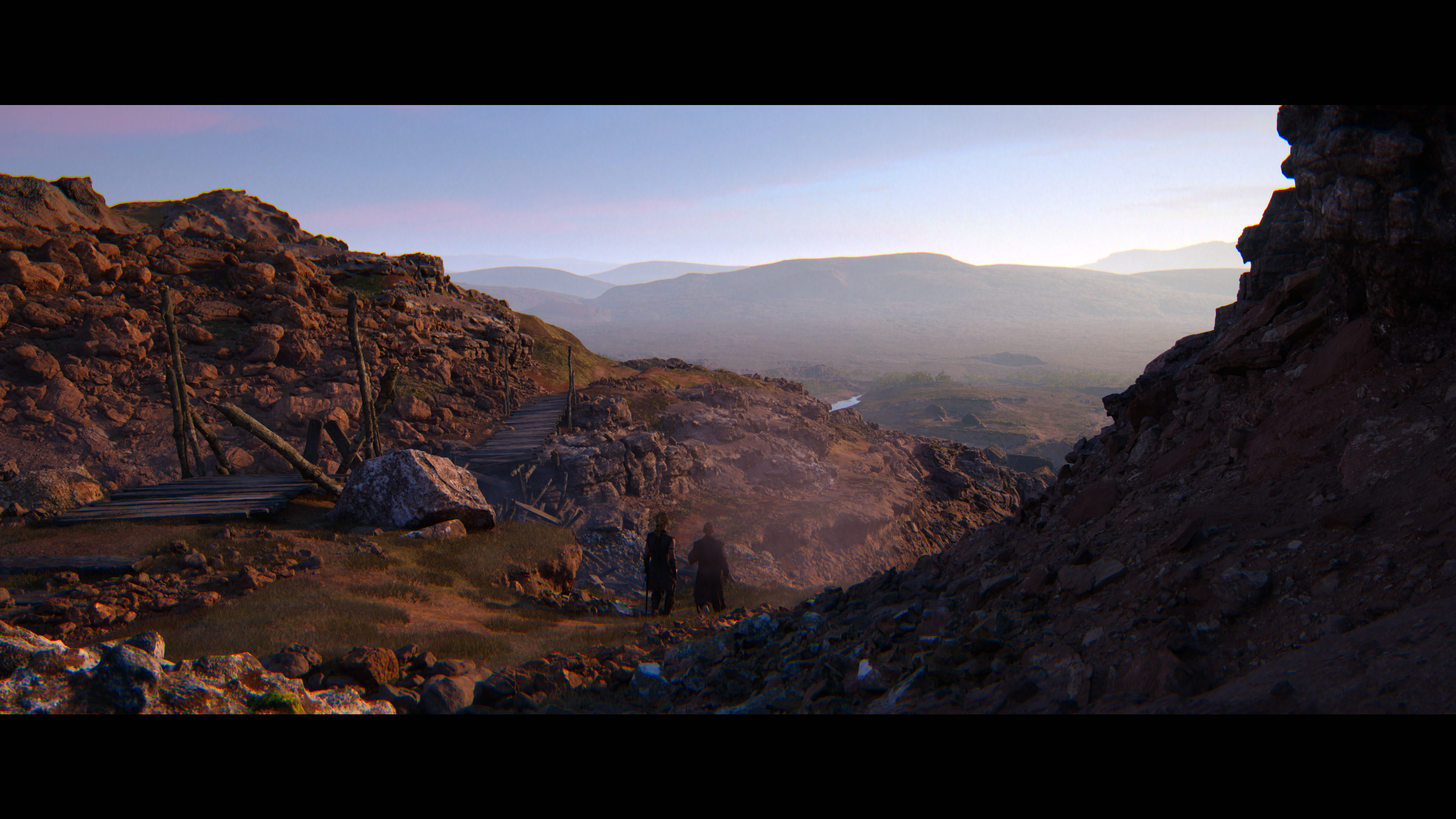
In-game this approach to visual design pays off but also influences how Senua’s Saga: Hellblade 2 plays. The game is presented in a wider aspect ratio to emulate a cinema screen’s 2.39:1 ratio. The game’s camera lens distorts and becomes specked with artefacts as you explore the landscape. When you stumble into a fight the camera remains in this cinematic aspect ratio, it zooms, pans and rolls like a film camera. Inspired by Game of Thrones, the combat is realistic, very violent and, oddly for a video game, intimate. It took 75 days to mocap the fight sequences, so each one feels organic and adaptable.
“It's like two real people having a fight, which you sort of don't often get in games,” comments Mark, alluding to how Senua’s Saga: Hellblade 2 distances itself from the crowd-control combos of traditional games like God of War: Ragnarok. “With the camera pulled further back, you feel a little bit more detached and you maybe don't feel the impacts as much. So that was where that decision came from, we wanted that very personal feeling to every encounter.”
This choice was controversial amongst players who were expecting the established mechanics of an action game, and instead were put on a new, interesting path by Ninja Theory. But there’s no hint of regret from Dan and Mark, indeed the team are learning from feedback for future games.

Mark reflects on the need to try new ideas, saying: “I think there's space in the industry [for invention]. I love it when other developers are really creative and actually do something slightly outside of the norm. I think we stuck to what we wanted to do, even though we knew some of those decisions might be a little controversial amongst players.”
“There's definitely an appetite for something different,” says Dan. “We're happy to have proven that. I don't see any reason why we should then abandon the path that we've started on.”
Switching from Unreal Engine 4 to Unreal Engine 5 enabled the team to experiment and try these new ideas, as well as implement new techniques to achieve a sense of visual realism, such as implementing the use of photogrammetry into the environment creation and some aspects of character modelling. (Read our 'what is photogrammetry' explainer for more details.)
First impressions matter, and many who watched that first Unreal Engine 5 demo, ‘Lumen in the Land of Nanite’, which showcased the photorealism of Nanite and Lumen questioned whether it was truly achievable in a game. But Mark tells me when the team at Ninja Theory finally got hands-in with UE5, “it was incredible, and was quite a big generational leap for the studio,” he says.
Unreal Engine 5 particularly changed the approach to environment design and creation, says Dan. “UE5 informed an awful lot about how we approached stuff, and it kind of took the breaks off a lot of stuff, because in terms of the speed that you can capture something in a location, or in the studio, and then get that into the game engine, is greatly reduced, so you can refocus your attentions on other things, like the set dressing and the lighting and the composition.”
Making use of Unreal Engine 5

Ultimately, for all the impressive tech in Unreal Engine 5, for the Senua’s Saga: Hellblade 2 team it meant less time spent on problem solving and bust work, and more time focused on the artistic elements of game creation. “You can experiment,” remarks Dan, explaining how more can be spent on lighting, atmosphere, composition and art direction.
“It's allowing us to be more creative, because actually, it's becoming easier for content creators to get stuff into an engine and iterate. Iteration is definitely key,” says Mark. “You want to get stuff in and play with it and see it, see if it feels right, but have the ability to change things quickly. So, I think all the new pipelines and tools and engines are good for the industry.”
For this game virtual shadow maps, photogrammetry and reference taken in Iceland all came to the fore to create a unique, believable environment. The team experimented with shadow fall off - where the sharpness of a shadow ends or when to use a softer feel for a scene. But using Unreal Engine 5 is about ‘using the technology to craft the art you want [but the] technology is just the tool to get to where you need to go,” says Mark. “We don't like use tech for the sake of it, it needs to have a purpose, in this case we went really heavy on making a believable world.”
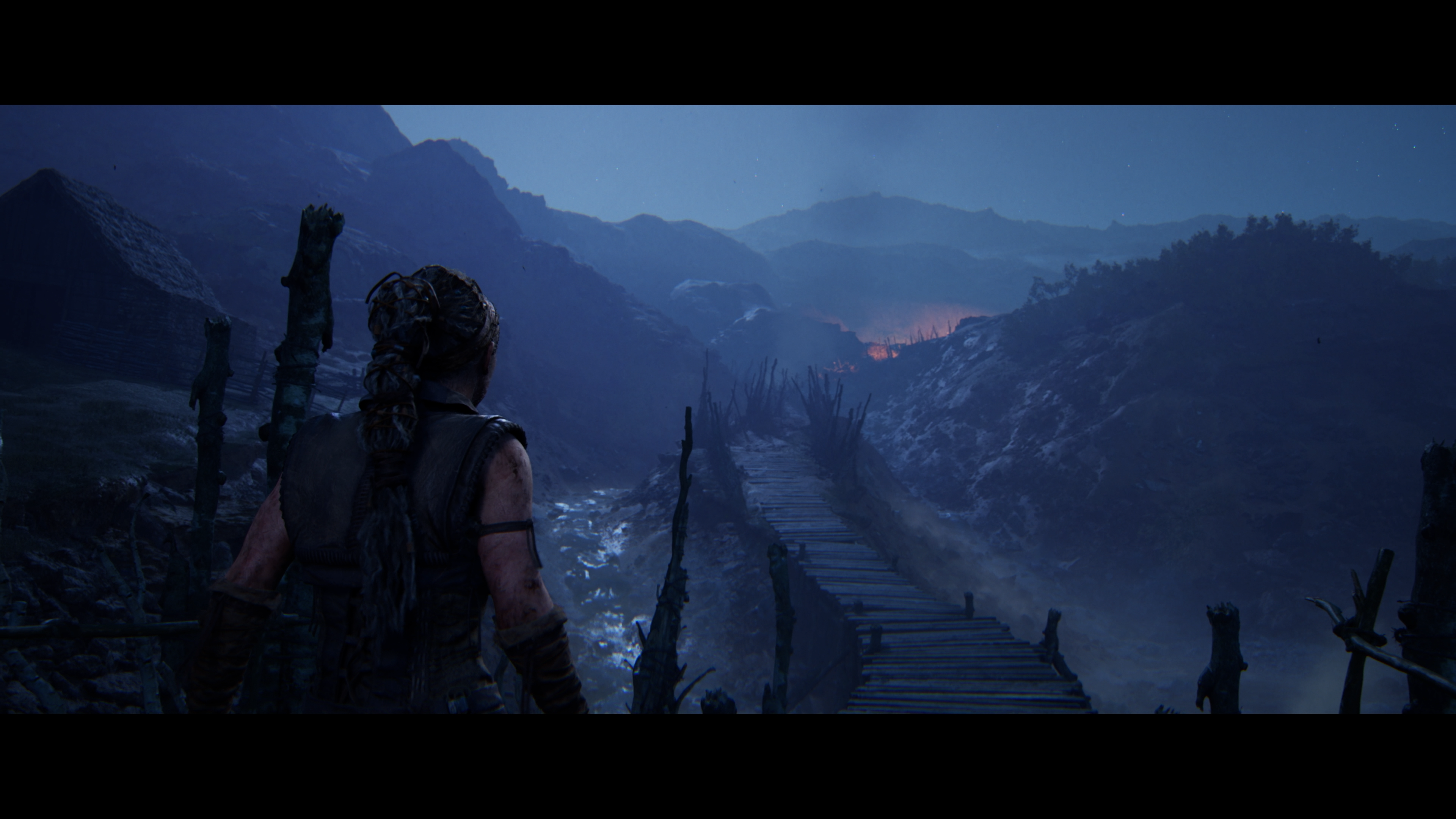
That’s not to say using UE5 was stress free, game development remains a balancing act of what is wanted versus what can be implemented. Even with Nanite geometry, which allowed for millions upon millions of triangles and Lumen’s real time, global illumination coupled with the use of virtual shadow maps for “crisp shadow detail,” says Mark, budgets needed to be balanced.
To help, the team spent time creating bespoke profiling tools that would play the game through overnight and generated graphs that revealed memory, CPU, and GPU budgets. It enabled the team to make areas of a scene cheaper or refocus on more costly aspects. “That's quite an investment, but it pays dividends for moving forward,” reveals Mark, adding: “We learned so much about the engine making this game.”
The payoff is the team were able to focus on the artistic merits of the game, pushing what was visually possible, with new technical and creative standards being met. Mark tells me the team often looks outward from the games industry for inspiration, to paintings, TV, films, installations and sculpture.
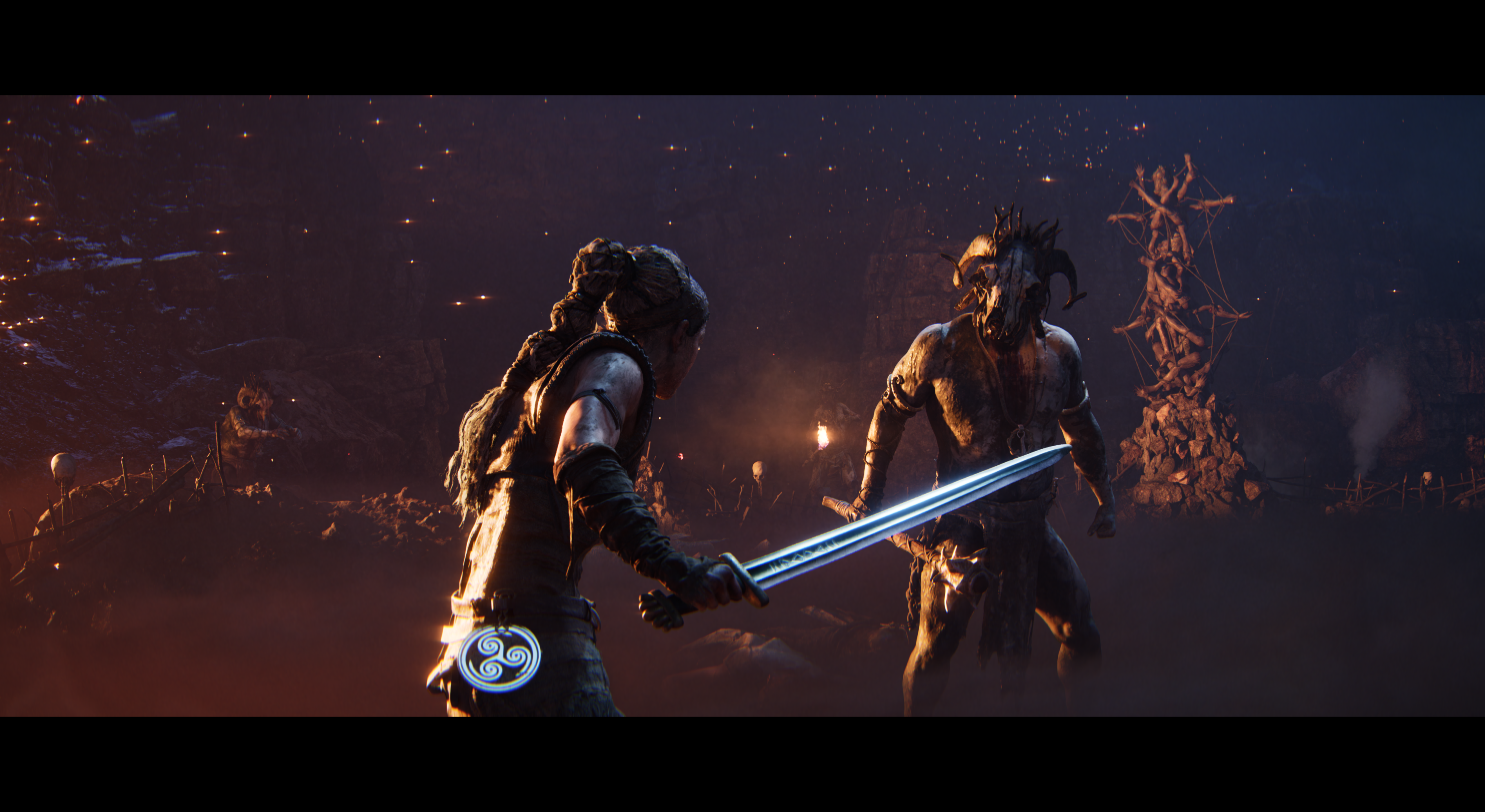
“Handcrafting stuff is our thing as well, it's probably our Achilles heel,” laughs Dan as he recalls wanting to make every single frame of the game count in a similar way to filmmaking. He adds: “For us, it's really important that everything is there for a reason; the lighting is like that for a reason to service the story…”
Mark interjects, saying, “The story and the feeling,” and explains how subtly changing the lighting for a particular moment or scene has a subconscious effect on the player. “You can make someone feel something slightly different. For us, as a studio, storytelling is what we enjoy doing and is important.”
Sometimes it's the feeling. Sometimes you know it looks amazing, you could ship it, but you just don't feel it
Mark Slater-Tunstill, VFX director, Ninja Theory
The ephemeral sense of feeling doesn’t just come from playing a game but it happens during the development process. Both Dan and Mark laugh and say there are aspects of Senua’s Saga: Hellblade 2 that could be improved - “We could make it look better,” smiles Dan.
It's very likely the tools and techniques created for Senua Saga: Hellblade 2 will be carried over into Ninja Theory's newly announced game Mara, an experimental horror adventure. So the challenge is laid down, and I think this team could surprise us all again.
Visit the Ninja Theory website for the latest news from this developer, as well as catch up with how to use Epic Games' tools in our new Unreal Engine tutorial for creating a game environment.







